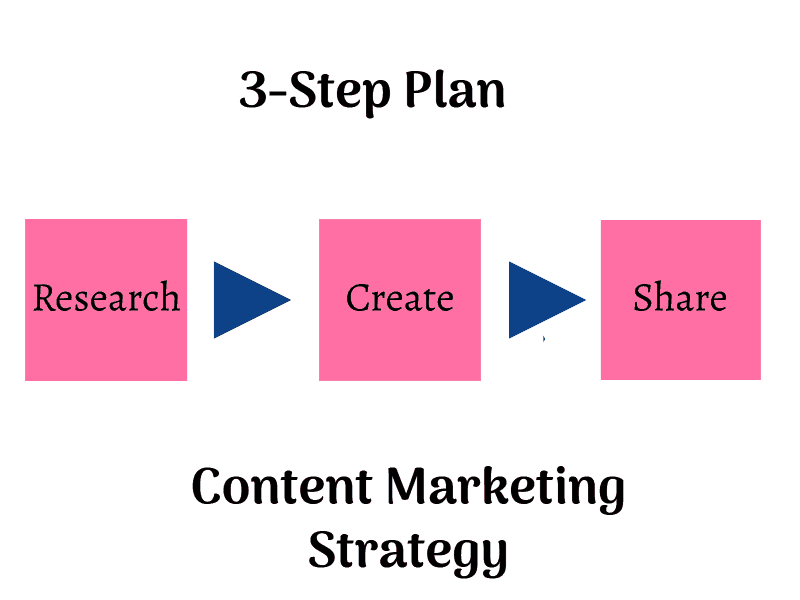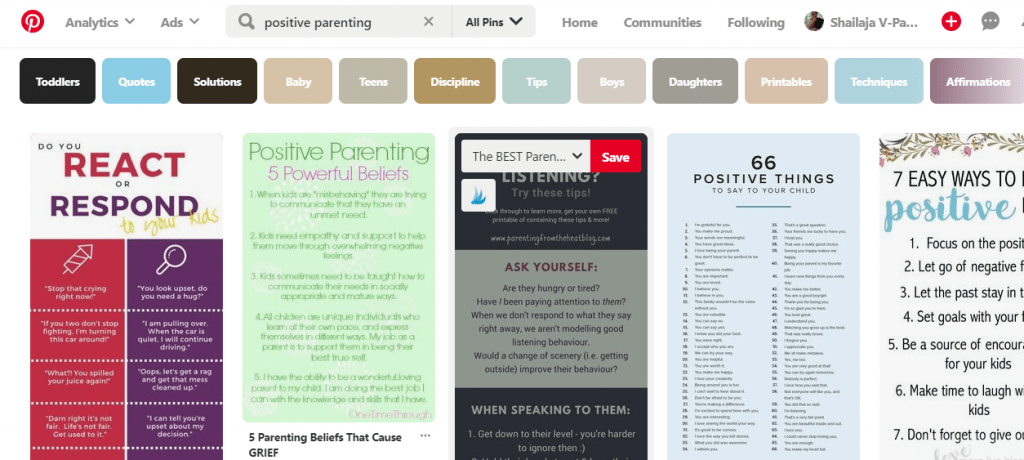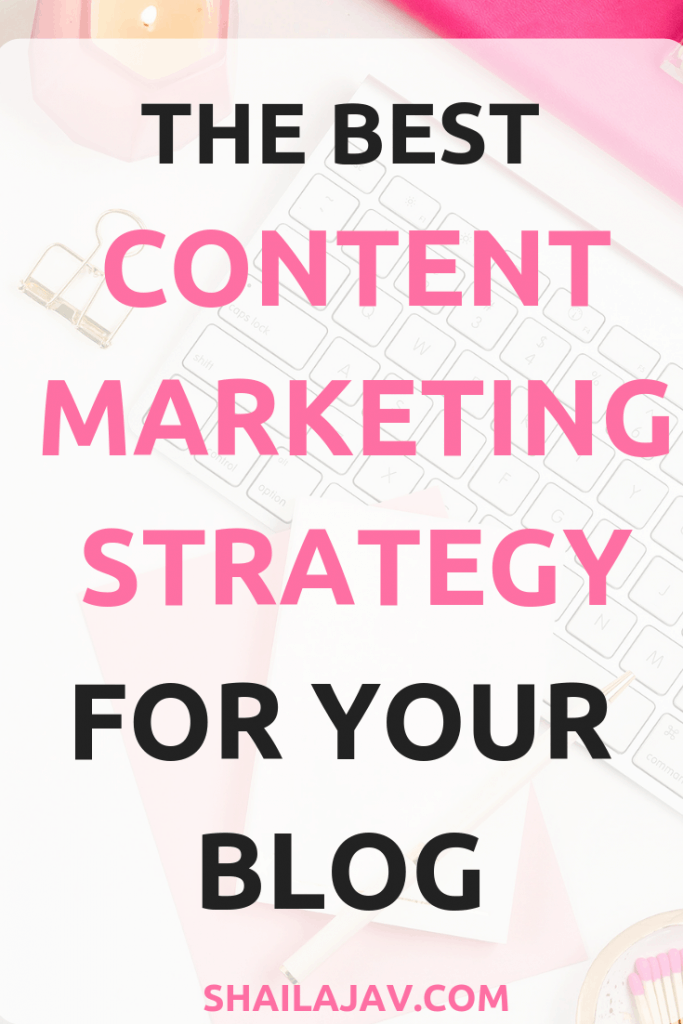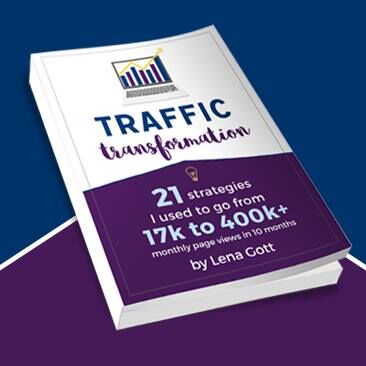Welcome to day 4 of the ‘Plan your Blog’ series. We’ve already covered why you need a bullet journal for your blog, how to set up your blog for success and how to find your target audience. Today we’re diving into my favourite blogging process: Creation. We will cover why you need a content marketing strategy and how to go about implementing it for your blog.

This post contains Referral/Affiliate links. What that means is if you click on some of the links and make a purchase, I get a commission at no extra cost to you. Read my complete disclosure policy here.
This post contains links to the Amazon affiliate program. As an Amazon Associate I earn from qualifying purchases. You can read my complete Disclosure policy here.
What is Content Marketing?
To put it very simply, it’s the art of creating content that will speak for itself.
But to be a little more specific, it’s about three core things:
- Researching the Content
- Crafting the Content
- Sharing the Content

I love the term ‘marketing funnel’ because it perfectly captures what ought to be your approach towards content. Start by researching the content; move to crafting the content and end with sharing the content strategically. Skipping steps in the funnel will create gaps in your strategy.
When done together, these three things go a long way towards building your content marketing plan.
Creating a content marketing strategy has a multi-layered benefit.
For one thing, you will know what kind of content people like to read and work on it in a focused manner. No more spinning your wheels or writer’s block.
For another, you will learn to listen to what the audience wants instead of what you want. Turning the spotlight outwards has a paradoxical effect of turning the focus on you, your brand and your content.
Are you ready to create your content marketing strategy?
Research your Niche

It’s great to blog from personal experience but even those of us who do that must remember one important thing:
How to make the content relevant to readers
That is why research is important. Research is the tool that tells you things like what your audience is searching for, what are the key words they are using to search and how other people in your niche are ranking on page 1 of search or on top of Pinterest search.
A) Look at Google/ Pinterest search
Start with typing in a few key words to see what pops up at the top of search results. I am going to take the example of my niche, parenting, to explain.
If I type in ‘parenting’, that’s too broad a term. I need to think more specifically. So, let me take the term ‘positive parenting’.
When I type it into Google, I look at three important things: The titles that come up on page 1, the words they’ve put in the URL and the short snippet below the link. This is effectively good SEO and those are all worth emulating for your own research.
When I type the same terms into Pinterest, I get a screen like this, with coloured tiles below the search result bar.

Each tile, from left to right, speaks of the importance/rank of the related search term.
So, that means more people are searching for ‘positive parenting toddlers’ than ‘positive parenting teens’. Simple, right? 🙂
If you want a step-by-step Pinterest Strategy that is REALLY affordable and that can also help with your content marketing strategy, I recommend checking out Carly Campbell’s Pinteresting Strategies{Affiliate link}.
B) Research your Audience
It’s very important to know whom you are writing for and why you’re writing for them.
I’ve gone into great detail on how to find your target audience in yesterday’s post, so set aside 10 minutes to read that one.
10 Excellent Methods to Define and Find your Target Audience
C) Research Social Media Platforms
There are so many platforms out there that it’s way too easy to get overwhelmed and be on all of them.
But the key to a good marketing strategy for content is knowing what content will work on each platform. We will go into that part in more detail later in the post.
Don’t miss my 10-Step Social Media Strategy that ALWAYS shows results!
D) Make notes about your research
This is a very important step. I’ve found that the only way I actually remember good ideas is if I write them down.
Even if you don’t have a paper and a pen planner, open up your notepad app (I love Google Keep!) and jot it down right away. Later, sit down and sketch out a skeletal structure for the post.
Jot down key words, ideas for images, what you can cover in-depth and so on.
Creating your Content

Now that the research is done, we come to creation.
The best thing about blogging? It’s seeing all the pieces come together, like a glorious jigsaw puzzle.
A) Decide on what kind of content will work
The beauty about blog content or digital content is that it is not limited to a single format. Depending on what you’re most comfortable with, pick one of the following:
A Blog Post
Video content (YouTube/ Instagram stories/ IGTV/ Facebook Live)
Images that speak for themselves (Instagram)
Audio content like Podcasts
Here are my top 20 podcasts for bloggers if you’d like some ideas!
The thing is different audiences relate to different things. If you have an existing blog post on a subject you can always convert that into a YouTube video with a simple set of images and a voice-over. Try it! You’d be interested by the results.
My video on how to create a circular bio photo on Canva was received well recently!
B) Create an outline
I can’t write any of my long-form posts without a structure in place. A skeletal set of ideas is very important because you will see a crucial component when you do: Flow.
Once you’ve decided the topic, write down bullet points on what you’d like to include.
Use the research points from section 1 to decide what to include and how to include the ideas.
Step back and see if there is a flow. You can also use a whiteboard for this purpose. Feel free to go back to the drawing board and re-structure/re-order thoughts before you write the post.
C) Format your content
I’m going to use the example of a blog post to explain this point.
When you write a post, think first about whether you want it to be a list-type of post or a narrative style post. Both types will work, by the way. It depends on your readers and if they are coming to deep-dive into your blog or just skim the headings and get what they need.
Keeping the reader in mind is crucial because you tend to structure your blog better. Things to remember when structuring:
i) Keep your paragraphs short. On devices, reading long paragraphs can be a strain.
ii) Add well-places and relevant images that are aligned with your theme’s dimensions and your blog colours.
iii) Include relevant links to other related posts. This will also keep your visitors on your site for longer and reduce your bounce rate.
iv) Work on your on-page SEO
v) Insert relevant links to affiliate products in an organic and non-intrusive manner.
New to Affiliate Marketing? Read How to get started with affiliate marketing for beginners
If you have a Kindle, I would suggest going ahead and buying the ‘One Hour Content plan’ by Meera Kothand. In under 60 minutes you will have a fool-proof content strategy that will give you clarity of purpose. It’s absolutely brilliant and I vouch for it. (I’d vouch for everything Meera does, actually. She’s fantastic!)
Sharing your Content

We now come to the end of the funnel. We’ve done the research and we’ve written the posts. Next stop: Marketing.
Marketing your content can feel a bit awkward , especially for many bloggers who are introverts and who find it uncomfortable to talk about themselves.
But the truth is, at least initially, you have to market yourself and your work. Without that, nobody will know that you exist. So, how do you go about it?
A) Pick social media channels in your niche
This is very important. Many bloggers don’t know where to begin and end up being on every platform at once. Not only does this cause burnout and frustration, but you don’t see results the way you’d have expected.
Hang out where your audience is and study the channel, its algorithm, what kind of posts other people in your niche are promoting.
Using social media as a user has multiple benefits for content creators. You always have eyes and ears open for the next big thing.
B) Schedule your content at optimal times on each channel
The secret to having your content go out to different channels without your actually being on them is scheduling.
I schedule out my content on Twitter and my Facebook pages using Buffer.
I use Tailwind (referral link) to pick the best times to share on both Pinterest and Instagram.
*Bonus: I love Tailwind’s Instagram Hashtag finder tool!
C) Batch your content marketing
You can’t be on all channels all the time. Neither can you do justice to even the same channel each time.
Unless, of course, you do what I do and batch your work.
Batching is a very simple way to ensure you do multiple instances of a task at once and be done with it.
For instance, I use one day in a week and spend 30 minutes to schedule out 7 Instagram posts for the week ahead. This includes finding the images, crafting the captions, adding the hastags and scheduling them at the times when my audience is online.
Also, THIS is why I advocate time blocking!
D) Re-share your best content
Google Analytics is my best friend! It tells me which of my content is performing the best in terms of traffic and conversions.
Not only that, it tells me which channel works for which article.
So I set aside one day every fortnight to deep-dive into my Analytics and figure out which content I should schedule out on which channel.
Don’t worry about re-sharing content. Your audience is constantly growing anyway. Just ensure that you space out the same content with a reasonable time frame so it doesn’t look spammy.
Missed reading the other posts in this series? Here they are:
Day 1’s post : Why you need a Bullet Journal for your Blog
Day 2’s Post: How to set up your Blog and Optimize it for Success
Day 3’s post: 10 Ways to find your Target Audience for the Blog
Don’t forget to come back tomorrow to check out the last post in the series.
Day 5: Why you need an E-mail Marketing strategy

Want access to a wonderful course that will grow your Blog traffic like crazy? Buy Lena Gott’s Traffic Transformation Guide. I did and in just a month since I started using her tips, my page views went from 9k to 14k views!




These tips are making SM so easy. I have been reading the popular ‘imported sites’ as well but somehow they don’t click with me. No idea why but your posts make sense. Keep at it Shy!
Well put. I agree with you and I market my content fidderently for different platforms. For me, especially with books, twitter and pinterest works best, and nothing else. But its the other way around for personal posts, which works best only on FB. So I keep juggling between platforms depending on what I write.
Thanks for this! I’m actually having a hard time in making a content, and what time should I post my blogs!
I agree with all your pointers on this, Shy. It’s a very logical, thought out approach to content marketing.
I have to say at the moment, I personally am struggling with the time to implement some of these strategies. Which is why, I figured I need more Laura Vanderkam in my life. 😀 One of her books on time-management is my current read!
Having a clear and concise content marketing plan is definitely a must. This will help you to avoid repetitive content. Thank you for sharing this!
Hi Shailaja,
Thanks for sharing this post. It’s been very helpful. Content marketing is definitely my ultimate strategy in driving traffic to my website. It’s true that finding a niche is the most important step and the foundation.
Again thanks Shailaja.
Valerie